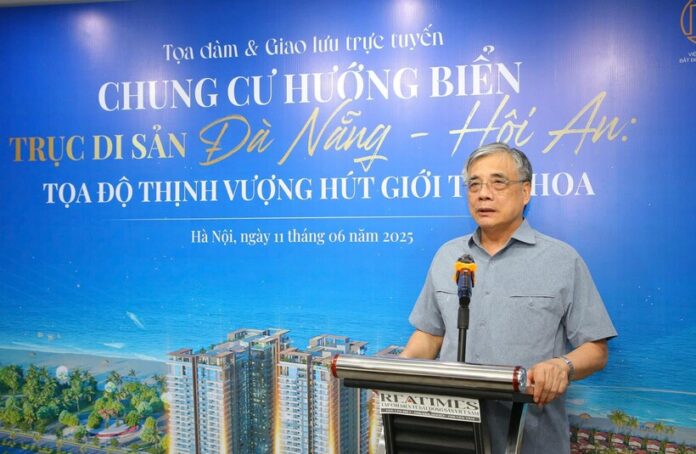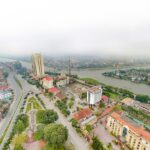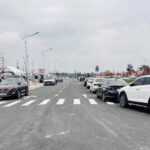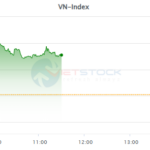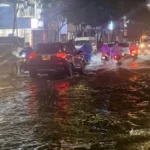
Prof. Dr. Tran Dinh Thien, Member of the Prime Minister’s Policy Advisory Council and former Director of the Vietnam Institute of Economics.
On the afternoon of June 11, the Vietnam Real Estate Online Magazine, in collaboration with the Vietnam Real Estate Research Institute, hosted a webinar on the topic “Seaside Apartments on the Heritage Axis of Da Nang – Hoi An: The Prosperity Coordinates Attracting the Elite.”
In his presentation at the webinar, Prof. Dr. Tran Dinh Thien shared his insights: “With the established momentum, position, and strength, the newly merged Da Nang is poised for significant growth. Currently, Da Nang occupies a unique geographic and historical location, serving an increasingly vital role in the modern development of the Central Coastal – Highlands region and the entire country. Along with Vietnam’s ascendance, Da Nang’s regional stature will continue to elevate.”
According to Prof. Dr. Thien, a new “portrait” of Da Nang is taking shape, characterized by a chain of urban development along the coastal line, stretching from Da Nang to Hoi An, Tam Ky, and Chu Lai. This development is complemented by the “fishbone” East-West routes and urban connections from the western regions. The tourism axis, spanning from Son Tra to Chu Lai, will unveil a new explosion zone, with Hoi An and Tam Ky serving as the nucleus.
The emergence of a new city, integrating a chain of modern urban-seaport-industrial-tourism complexes with the attributes of “green, digital, intelligent, and creative,” will be a competitive force on a regional and global scale. There is no reason to doubt the explosive development prospects of the new Da Nang, as history, aspirations, vision, and intellect converge to form an extraordinarily robust driving force. Anticipate the extraordinary to unfold in this very land, affirmed Prof. Dr. Tran Dinh Thien.
The merger between Da Nang and Quang Nam brings strategic changes to the southeast region of Da Nang, particularly to Ngu Hanh Son District. Experts concur that the southeast coastal belt of Da Nang, stretching from Son Tra, My Khe, and Ngu Hanh Son to the ancient town of Hoi An and the Chu Lai open economic zone, encapsulates three layers of value: natural, cultural, and comprehensive connectivity. This area is poised to become a strategic belt and a “future convergence” hotspot for investment.
Architect Tran Ngoc Chinh, President of the Vietnam Urban Planning and Development Association and former Deputy Minister of Construction, asserted: “The Heritage Boulevard connecting Hue, Da Nang, and Hoi An boasts the most magnificent scenery in Vietnam. Not only does it encompass natural and cultural heritage sites recognized by UNESCO, but it also serves as a strategically invested coastal transportation artery.”
With its unique location, the Da Nang-Quang Nam heritage urban area is just 10 kilometers away from the North-South high-speed railway, with two vital stations: Da Nang and Tam Ky. The presence of high-speed railways, highways, an international seaport, and an airport form an incredibly convenient transportation infrastructure network. Such a comprehensive transportation advantage strengthens connectivity and attracts investment into the region’s real estate sector. Few urban areas can rival this transportation hub advantage.
Architect Tran Ngoc Chinh assessed: “Da Nang-Quang Nam stands out with its long-term coastal planning vision, maximizing natural advantages. Consequently, many large corporations have chosen this destination, creating a powerful ripple effect and opening opportunities for other businesses to invest and develop.
Additionally, the presence of the ancient town of Hoi An, the romantic Thu Bon River, the Dai River mouth, Ky Ha Port, and Chu Lai collectively shape a rare scenic landscape. Real estate projects in this area boast breathtaking river and sea views.

A handful of projects slated for the near future promise to introduce new supply to the Da Nang seaside urban resort real estate model.
Moreover, the region boasts a series of internationally renowned golf courses and other prominent brands, forming an incredibly diverse ecosystem of resorts, entertainment, and investment. This convergence ensures that each real estate project in the area offers not just a residence but also a host of premium amenities, providing investors and customers with diverse and appealing choices.
All these factors underscore the allure of the Hue-Da Nang-Hoi An Heritage Boulevard, which is both expensive and enchanting, attracting tourists and investors alike. I anticipate that in the future, post-merger, Da Nang and Quang Nam will witness even more remarkable breakthroughs.”
Meanwhile, Prof. Dr. Tran Dinh Thien assessed: “The merger between Da Nang and Quang Nam is expected to unlock vast potential for real estate projects, especially along the southern coastline. Historically, projects that catalyzed Da Nang’s explosive growth were concentrated in coastal areas. In the next phase, the ‘new’ Da Nang will witness a real estate market boom, particularly at several significant coordinates along the southeast Da Nang axis, stretching from Son Tra, My Khe, and Ngu Hanh Son to the ancient town of Hoi An and the Chu Lai open economic zone.”
The Land Grab: Investors Flock to Cuchi and Can Gio
The rising land prices and sluggish liquidity have left many investors in a waiting game, as those who bought land in Cu Chi and Can Gio remain stagnant.
The High-Speed Rail Venture: Addressing Suspicions with a $100 Billion Vision
Mr. Vo Xuan Truong, Chairman of the Mekolor Investment Alliance and Great USD, has revealed ambitious plans for a high-speed rail project connecting the North and South of the country. With a staggering $100 billion in investment funds, Mr. Truong is determined to revolutionize interstate travel, promising a future of rapid, efficient, and comfortable transportation for all.
Heavy Rainfall Floods Da Nang’s Roads, Vehicles Struggle in the Deluge
Heavy rainfall since the evening of June 11 has caused severe flooding in many areas of Da Nang, creating significant challenges for residents’ mobility.

